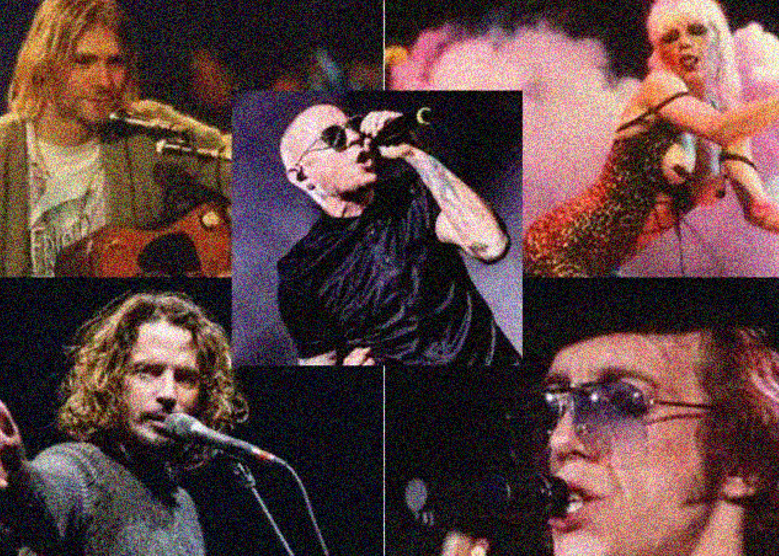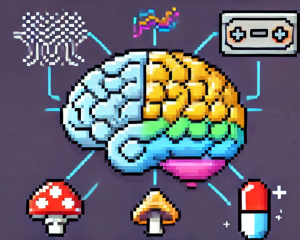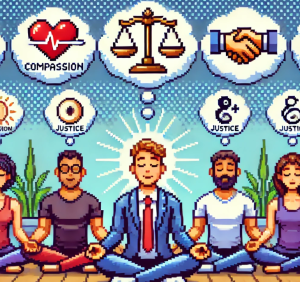
What Happens When the Music Stops? Inside the Suicide Crisis Facing Musicians
Kurt Cobain. Amy Winehouse. Avicii. Sulli. The names span genres, continents, and decades—but the pattern is hauntingly familiar. Despite global fame and outward success, far too many musicians die by suicide, often in silence and isolation. But new research shows these aren’t just tragic coincidences—they’re warning signals of an industry-wide crisis.
Why This Matters Now
It turns out that musicians—particularly those in popular genres like rock, EDM, country, and K-pop—face one of the highest suicide risks among all professions. A recent cross-disciplinary review reveals just how deep this issue goes, why it’s been largely overlooked, and how we can finally turn the volume up on suicide prevention for musicians.
The numbers are chilling: male musicians in the U.S. face one of the highest suicide rates of any profession. In the UK, female musicians have a 69% higher suicide rate than the national female average. And across countries, music professionals consistently appear on the short list of highest-risk occupations—alongside construction workers and agricultural laborers.
But here’s what makes the crisis uniquely insidious: the cultural myth of the “tortured artist.” We romanticize pain. We expect struggle. And sometimes, that stops us from seeing—or acting on—genuine distress.
The Science Behind the Struggle
Researchers identified several major risk factors fueling this crisis:
- Unstable Careers and Financial Precarity: Many musicians live gig-to-gig, with unpredictable income and little access to mental health services.
- High Rates of Depression and Substance Use: Studies show elevated levels of both among musicians—especially in the absence of strong support systems.
- Industry Culture: Bullying, sexual harassment, and perfectionism are all rampant—and often normalized—in music industry environments.
- Genre and Gender Risks: Genres like metal, punk, and emo rap have been linked to higher suicide rates. And in a disturbing twist, female musicians seem to lose the statistical “protection” against suicide seen in other occupations.
- K-pop and Cultural Pressure: South Korea’s K-pop scene presents a unique set of risks—grueling training from childhood, obsessive fans, and sky-high expectations.
The 27 Club Isn’t a Myth—It’s a Mirror
The so-called “27 Club” might not be statistically real—but its symbolic power is. When Jimi Hendrix, Janis Joplin, and later Kurt Cobain and Amy Winehouse all died at 27, it cemented a dangerous narrative: that creative brilliance and self-destruction go hand in hand.
This myth obscures the real, structural issues putting musicians at risk—burnout from touring, sleep deprivation, unmanaged mental illness, and lack of industry support.
So What Can We Do?
That’s where the Zero Suicide Framework comes in. Originally designed for healthcare systems, the framework lays out a bold vision: no suicide is acceptable, and every system should be set up to prevent it. This new paper adapts that model specifically for musicians.
Here are three key takeaways:
1. Leadership Must Lead
Record labels, tour managers, and streaming platforms can’t just promote mental health awareness once a year. They need to make mental healthcare a core business priority—just like they do safety regulations for concerts or copyright enforcement.
Some are starting to step up. Campaigns like Music Minds Matter and Backline provide helplines and resources. Rapper Logic’s song “1-800-273-8255” even reduced suicide rates after its release. But we need more leadership, more investment, and more visibility.
2. Train the Inner Circle
Musicians aren’t just surrounded by fans—they have networks of collaborators, managers, agents, and family members. Training these gatekeepers to spot signs of suicidal distress—and act on them—can save lives. Evidence-based programs like CALM (Counseling on Access to Lethal Means) and safety planning tools are already in use in other industries. It’s time to bring them to the stage.
3. Treat the Artist, Not Just the Art
Therapies like Dialectical Behavior Therapy (DBT), Collaborative Assessment and Management of Suicidality (CAMS), and CBT-SP have been shown to reduce suicide risk. These need to be tailored to the musician lifestyle—accounting for touring schedules, creative pressures, and irregular hours.
Telehealth could be a lifeline, especially for touring artists. So could peer-support networks and community-based check-ins. But again, the research is clear: treatment works—but access and stigma remain major barriers.
What’s Next?
Musicians give the world soundtracks to grieve, to celebrate, and to survive. Isn’t it time we gave them more than applause?
This study is one of the first to pull together global data, cultural insight, and clinical best practices for suicide prevention among musicians. But it also leaves us with pressing questions:
- How can we better fund and scale mental health support for freelance or gig-based creatives?
- Should the industry adopt universal mental health screenings like other high-risk jobs?
- What responsibility do platforms—Spotify, TikTok, YouTube—have in supporting mental health?
Join the Conversation
🎧 If you’re in the music industry, what support systems are in place for you or your peers?
📊 Should suicide prevention training be required in creative fields?
🎤 How can fans be part of the solution, not just the story?
Let’s stop romanticizing the fall. Let’s build a system where the music doesn’t have to stop—at 27 or ever.
Make an Impact Today – Subscribe & Share!
Public health demands urgent action. Be part of the solution with weekly expert insights and real opportunities to create change. Subscribe for free now!
⚡ Don’t delay! Share this blog today and help build a healthier, more informed world.



